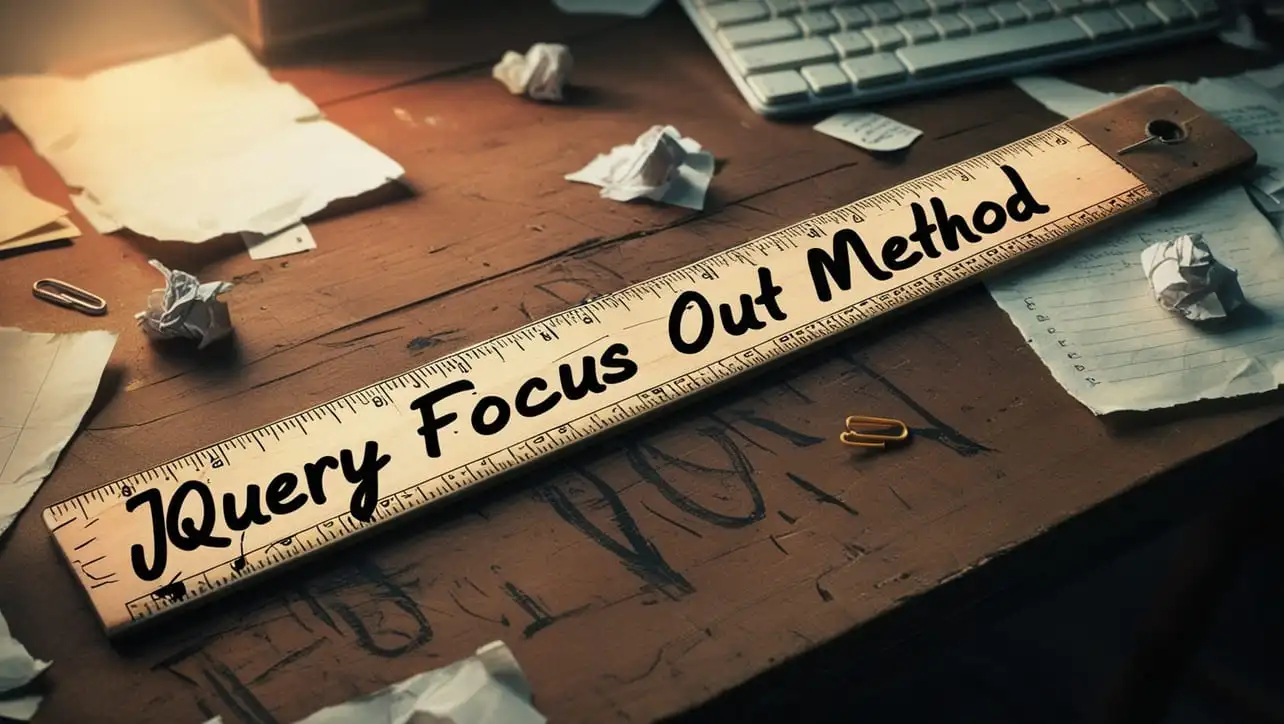
jQuery Topics
- jQuery Introduction
- jQuery Callbacks
- jQuery deferred
- jQuery selectors
- jQuery Ajax Events
- jQuery Ajax Methods
- jQuery Keyboard Events
- jQuery Keyboard Methods
- jQuery Form Events
- jQuery Form Methods
- jQuery Mouse Events
- jQuery Mouse Methods
- jQuery Event Properties
- jQuery Event Methods
- jQuery HTML
- jQuery CSS
- jQuery Fading
- jQuery Traversing
- jQuery Utilities
- jQuery Properties
jQuery .focusout() Method

Photo Credit to CodeToFun
🙋 Introduction
jQuery offers a plethora of methods to handle user interactions on web pages efficiently. One such method is .focusout(), which allows you to execute code when an element loses focus. Understanding and utilizing this method can significantly enhance the interactivity and usability of your web applications.
In this guide, we'll explore the jQuery .focusout() method with detailed examples to help you grasp its functionality effectively.
🧠 Understanding .focusout() Method
The .focusout() method in jQuery is used to trigger a function when an element loses focus. This could be particularly useful for form validation, updating UI elements, or performing actions based on user input.
💡 Syntax
The syntax for the .focusout() method is straightforward:
$(selector).focusout(function)📝 Example
Basic Usage:
Let's start with a simple example where we display an alert message when an input field loses focus:
index.htmlCopied<input type="text" id="textInput">example.jsCopied$("#textInput").focusout(function() { alert("Input field lost focus!"); });In this example, whenever the input field loses focus, an alert with the message Input field lost focus! will pop up.
Form Validation:
You can utilize the
.focusout()method for real-time form validation. Here's an example where we check if the input field is empty when it loses focus:index.htmlCopied<input type="text" id="usernameInput">example.jsCopied$("#usernameInput").focusout(function() { if ($(this).val() === "") { alert("Username cannot be empty!"); } });This will display an alert if the username input field is left empty when it loses focus.
UI Updates:
You can also use
.focusout()to update UI elements dynamically. For instance, let's change the background color of a div when an input field loses focus:index.htmlCopied<input type="text" id="inputField"> <div id="outputDiv"></div>example.jsCopied$("#inputField").focusout(function() { $("#outputDiv").css("background-color", "lightblue"); });When the input field loses focus, the background color of the outputDiv will change to light blue.
Event Delegation:
For dynamically added elements, event delegation can be used to handle the
.focusout()event. This ensures that even elements added after the initial page load are accounted for.example.jsCopied$(document).on("focusout", "#dynamicElement", function() { // Your code here });
🎉 Conclusion
The jQuery .focusout() method provides a convenient way to execute code when an element loses focus. Whether it's for form validation, UI updates, or other interactive features, this method offers flexibility and ease of use.
By incorporating .focusout() into your web development toolkit, you can create more responsive and user-friendly applications.
👨💻 Join our Community:
Author

For over eight years, I worked as a full-stack web developer. Now, I have chosen my profession as a full-time blogger at codetofun.com.
Buy me a coffee to make codetofun.com free for everyone.
Buy me a Coffee












If you have any doubts regarding this article (jQuery .focusout() Method), please comment here. I will help you immediately.